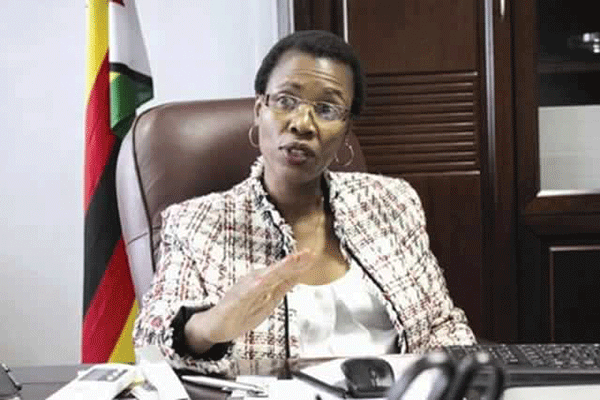
Fuel prices in Zimbabwe have in the past few weeks gone up by at least 5 cents to $1,32 and $1,16 per litre for petrol and diesel respectively.
BY TATIRA ZWINOIRA

The increase has been attributed to changes in free on board (FOB) price — the price at which fuel is charged by local traders as determined by international market forces at the port of delivery.
The move has raised fears of general commodity price rises in an economy already weighed down by a crippling liquidity crunch.
Fuel dealers have raised prices as the international price of crude oil per barrel rose to $44,57 as of Thursday.
The price of crude oil had fallen during the early months of 2016, dropping in February to an average of between $33 and $38 per barrel, leading to a downward review of fuel prices, in Zimbabwe.
In February, the local price of fuel stood at $1,35 and $1,25 for petrol and diesel respectively. The price was further reduced to $1,27 and $1,02 for petrol and diesel respectively.
In an interview last week, Zimbabwe Energy Regulatory Authority (Zera) CEO Gloria Magombo said fuel prices had gone up again due to corresponding rises on the international market, driven by the FOB price.
- Chamisa under fire over US$120K donation
- Mavhunga puts DeMbare into Chibuku quarterfinals
- Pension funds bet on Cabora Bassa oilfields
- Councils defy govt fire tender directive
Keep Reading
“We subscribe to a unit we call Platt, a market priced data base used to monitor fuel prices, especially the FOB prices. Fuel supply contracts are linked to Platts,” Magombo said.
S&P Global Platts is a leading independent provider of information and benchmarks prices for commodities on the energy markets for use, especially by regulatory bodies.
Under this platform, FOB prices can be followed easily and Zera is then able to capture market data each week to calculate the FOB price.
“When the FOB price starts going up, according to our taxing system, fuel prices will also go up. Currency differences regionally are the reason why we [Zimbabwe] are priced higher than the rest of the region. As long as we are a United States dollar economy, we cannot compete against regional fuel prices,” Magombo said.
She said the main reason for the recent surge in fuel prices was the increase in international prices since March.
A survey conducted by Standardbusiness on fuel dealers revealed that Total was charging $1,32 and $1,18, Engen ($1,30 and $1,14), Puma ($1,32 and $1,16), Redan Petroleum ($1,33 and $1,17), Zuva ($1,32 and $1,17) and Trek ($1,31 and $1,14) for petrol and diesel respectively.
Malawi fuel prices ranged at $1,09 and $1,06, Lesotho ($0,70 and $0,67) and Swaziland ($0,75 and $0,74) for petrol and diesel respectively. The reason for the lower prices in these countries was that they used weaker currencies than the US$ and the effect was that they appeared like they were subsidising the price, Magombo said.
Meanwhile, in South Africa fuel prices range at an average of $0,91 and $0,92, Namibia ($0,68 and $0,64), Angola ($0,95 and $0,80), Botswana ($0,69 and $0,65), Mozambique ($0,74 and $0,57) and Zambia ($1,02 and $0,89) for petrol and diesel respectively.
The low prices in these markets are influenced by the fact that some of these countries are close to the ports, while some have their fuel semi-subsidised.
Others like South Africa have refineries and therefore import crude oil at cheaper prices.
In Zimbabwe, fuel prices are determined by Statutory Instruments (SI) 80 of 2014, 20 of 2015 and 100 of 2015. Under these statutory instruments, the pricing structure for fuel is made out of a plethora of factors which then lead to a substantial rise in the price of the product.
These include FOB, freight, duty, Zinara road levy, carbon tax, debt redemption, strategic reserve levy and storage.
Other factors are handling, clearing agency fees, financing cost, inland bridging cost, storage and handling costs, and secondary transport costs.
After all these factors are taken into account, Zera further allows fuel operators to put a maximum of $0,06 profit margin, making the prices high and variable.
Of the factors affecting the price of fuel, the most influential are the FOB and duty.
According to the SI, the price of duty per litre is $0,45 and $0,40 for petrol and diesel while the FOB, which is dependent on market forces, is $0,474 and $0,472 respectively.
Diesel 500, emits more carbon gas and as such, the cost also stands higher at $0, 478.
Zuva Petroleum CEO Bethwell Gumbo confirmed prices in Zimbabwe were affected by FOB and duty.
Willard Manungo, treasury permanent secretary, said Finance minister Patrick Chinamasa was working on the mid-term fiscal policy and he could, therefore, not comment on the fuel prices as that risked pre-empting the minister.
“If you look as of February, our duty, Zinara levy, debt redemption, and all our taxes and levies take up $0,461 and $0,632 for diesel and petrol respectively,” he said.
“We are still at that level. So in terms of the prices, the duties have remained the same so we [government] are not taking any increasing share.”
Economist Tony Hawkins said government had few options and little scope to raise revenue and as such, government had no choice but to look for the money where demand was constant, such as fuel.
“Without knowing too much of the pricing structure itself, since the beginning of the year oil prices have turned quite a bit; you would expect that our prices would bounce back and start increasing again, assuming that the price structure remains the same,” he said.
“But, that does not explain why prices are higher here than elsewhere. One would assume it is because of higher taxes, which is the most likely explanation.
“It is the excise duty and the margins that you have to look for [in the pricing structure]. It [high prices of fuel] will certainly have a negative effect as it would increase the cost of doing business and it is certainly negative from an export viewpoint.”
With depleting sources of disposable income, motorists and individuals are bound to be the ones to cover the cost, according to Zimbabwe National Chamber of Commerce CEO Christopher Mugaga.
“One thing that we are not aware of which we need to know is the average cost of fuel in the production cost,” he said.
“The impact is damaging. I think you agree with me that petrol has been defining the whole cost side, so generally in terms of regional prices, Zimbabwean petrol prices are still very high but we cannot avoid that given the fiscal vulnerability of this economy,” Mugaga said, adding that some taxes were necessary to cater for budgetary constraints.
“Some of these include the salary outfit that needs to be paid by government and you do not okay them by limiting your fiscal space, so what you do is that you end up piling pressure on consumers by increasing petrol prices.”
He said if government was broke, higher fuel prices could not be avoided.
Confederation of Zimbabwe Retailers president Denford Mutashu said fuel price increases had a tendency to force prices upwards.
“However, the market is subdued at the moment as demand for goods and services has been low for a long time,” he said.
“That might see prices of goods remaining where they are and /or if at all they rise, it will be marginal. “The fuel price increase will only act to erode retail margins as there is no space to raise prices at the moment.”










